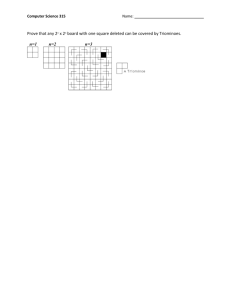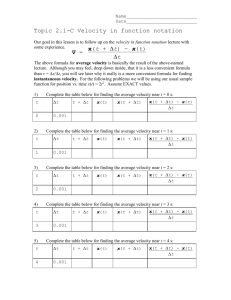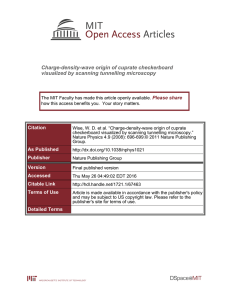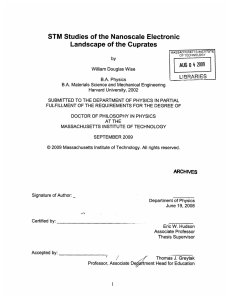Resolution Tests
advertisement
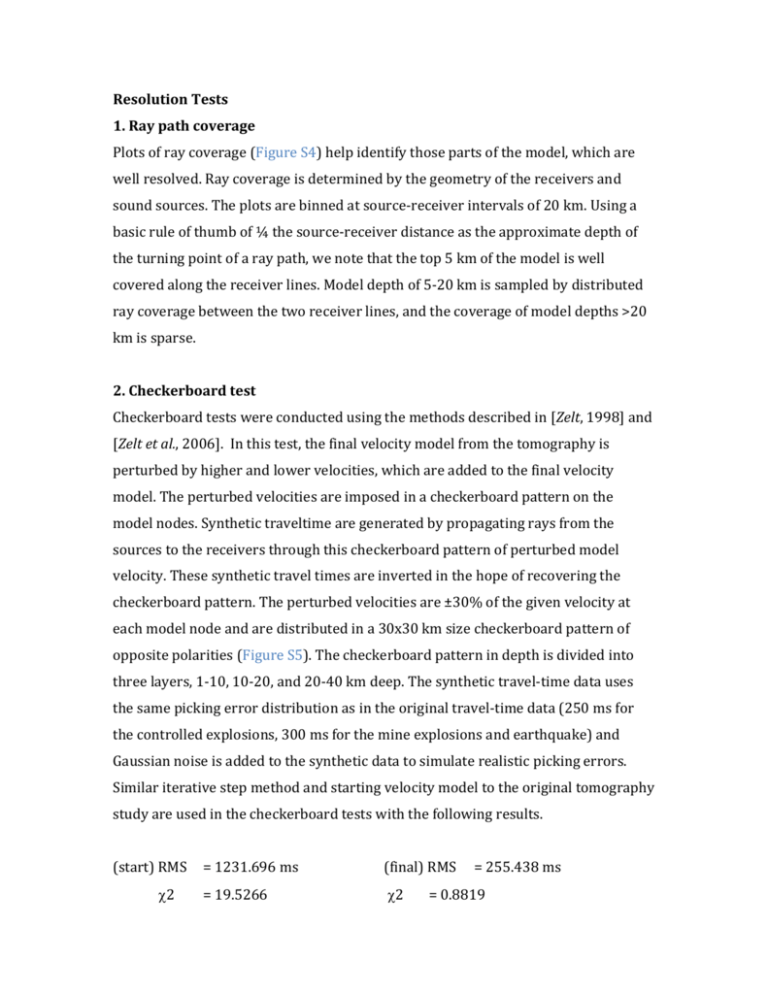
Resolution Tests 1. Ray path coverage Plots of ray coverage (Figure S4) help identify those parts of the model, which are well resolved. Ray coverage is determined by the geometry of the receivers and sound sources. The plots are binned at source-receiver intervals of 20 km. Using a basic rule of thumb of ¼ the source-receiver distance as the approximate depth of the turning point of a ray path, we note that the top 5 km of the model is well covered along the receiver lines. Model depth of 5-20 km is sampled by distributed ray coverage between the two receiver lines, and the coverage of model depths >20 km is sparse. 2. Checkerboard test Checkerboard tests were conducted using the methods described in [Zelt, 1998] and [Zelt et al., 2006]. In this test, the final velocity model from the tomography is perturbed by higher and lower velocities, which are added to the final velocity model. The perturbed velocities are imposed in a checkerboard pattern on the model nodes. Synthetic traveltime are generated by propagating rays from the sources to the receivers through this checkerboard pattern of perturbed model velocity. These synthetic travel times are inverted in the hope of recovering the checkerboard pattern. The perturbed velocities are ±30% of the given velocity at each model node and are distributed in a 30x30 km size checkerboard pattern of opposite polarities (Figure S5). The checkerboard pattern in depth is divided into three layers, 1-10, 10-20, and 20-40 km deep. The synthetic travel-time data uses the same picking error distribution as in the original travel-time data (250 ms for the controlled explosions, 300 ms for the mine explosions and earthquake) and Gaussian noise is added to the synthetic data to simulate realistic picking errors. Similar iterative step method and starting velocity model to the original tomography study are used in the checkerboard tests with the following results. (start) RMS 2 = 1231.696 ms (final) RMS = 19.5266 2 = 255.438 ms = 0.8819 Based on the tests, we find that only large-scale features in the velocity model can be resolved (Figure S5) due to the geometry of the shot and receivers. In addition to the areas along the receiver lines in the model, the resolution of the checkerboard is best at the top 2-5 km of the model, where velocity contrasts in the final model are large (±15%) and it decreases with depth, where the velocity contrast is smaller (97%). Low velocity areas are difficult to resolve in general in tomography of firstarrival travel time, due to the tendency of the first arrivals to travel through the faster regions of the medium. The resolution of the model seems to be robust enough in the upper 12 km of the model, which is the model region needed to determine the general shape of the Dead Sea basin. 3. Starting Model test A complement to the checkerboard test is a test of the sensitivity of the final velocity model to different starting velocity models (Table A1). Test Models 1 and 2 are laterally homogenous, but have minor variations compared to the laterally homogenous preferred starting model. Test Models 3 – 7 have different velocities across the transform valley. These velocities are smoothed-out from the 2-D raytracing model of the West-East refraction profile (ten Brink et al., 2006; Figure 2a). Identical inversion parameters (travel-time errors, number of iterations, grid cell size, etc.) were used in all the models. Although the goodness of fit of the starting homogenous models (preferred, Test1 and Test 2) is slightly worse than the starting models with lateral variations across the transform valley, the final preferred and Test 1 models fit the observed travel time values as well or better than the other models. The final models with the different starting models all consistently show low and high velocities in the same areas and depths. References: Zelt, C. A. (1998), Lateral velocity resolution from three-dimensional seismic refraction data, Geophysical J. Int., 135, 1101-1112. Zelt, C. A., A. Azaria, and A. Levander (2006), 3D seismic refraction traveltime tomography at a ground water contamination site, Geophysics, 71, H67-H78.


